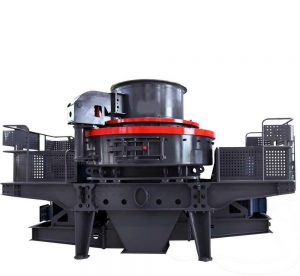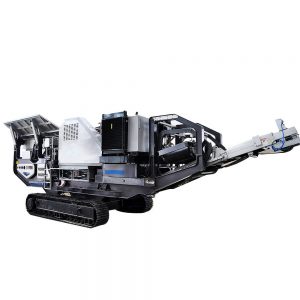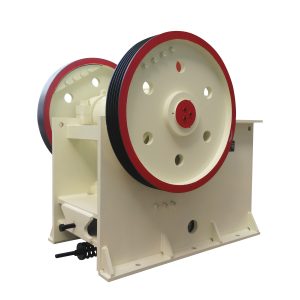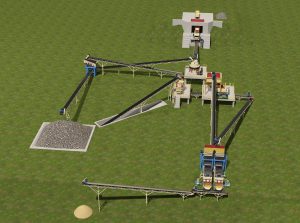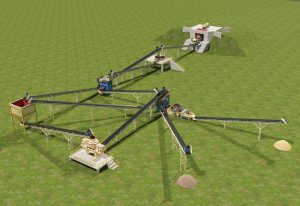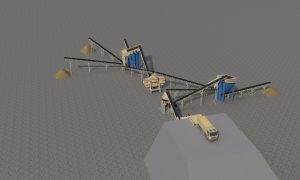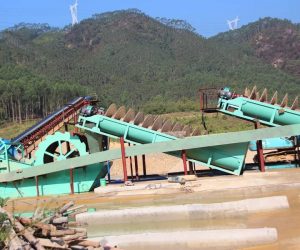Zeolite Sand-Making Process Plant
Zeolite, a fascinating natural mineral, has gained significant attention across various industries due to its unique properties and versatile applications. In this blog, we will explore what zeolite is, delve into its applications, and provide a comprehensive overview of the zeolite sand-making process. Additionally, we will discuss the equipment necessary for establishing a zeolite sand-making plant. This information is essential for anyone interested in zeolite sand production and utilization in today’s market.
What is Zeolite?
The Nature of Zeolite
Zeolite is a naturally occurring microporous aluminosilicate mineral that forms from altering volcanic ash and glass. Characterized by its crystalline structure, zeolite can trap and exchange ions and molecules, making it an exceptional material for various applications. The most common types of zeolites include clinoptilolite, chabazite, and mordenite, each differing slightly in their chemical composition and properties.
Zeolite’s structure consists of a three-dimensional framework. This framework creates a series of interconnected pores and cavities, which grant zeolite its remarkable absorption and ion exchange capabilities.
Applications of Zeolite Sand
Zeolite sand’s unique properties make it a valuable resource in many industries. Here are some of the most prominent applications:
- Water Treatment: Zeolite has wide applications in water purification. It effectively removes heavy metals, ammonia, and other contaminants from water, making it suitable for drinking water and wastewater treatment systems. Zeolite can also help reduce the formation of harmful disinfection byproducts in drinking water.
- Agriculture: Zeolite can amend soil. It retains moisture and nutrients to enhance soil fertility and promote healthy plant growth. By improving nutrient retention, zeolite increases crop yields and reduces fertilizer costs. Additionally, zeolite can be used in animal feed to improve digestion and reduce odors in livestock operations.
- Construction: Zeolite sand is used as a lightweight aggregate in concrete production. Its pozzolanic properties enhance the strength and durability of concrete while reducing its overall weight, which makes zeolite a popular choice for eco-friendly construction materials.
- Air Filtration: Due to its porous nature, zeolite is effective at adsorbing odors and volatile organic compounds (VOCs), making it an ideal material for air purification systems. It is commonly used in industrial and residential air filters to improve indoor air quality.
- Environmental Remediation: Zeolite sand can be employed to remediate contaminated sites. Its adsorptive properties enable it to trap pollutants, including heavy metals and organic compounds, effectively cleaning up contaminated soil and water.
- Pet Care: Zeolite is widely used in pet care products. Its ability to absorb moisture and control odors makes it an excellent choice for pet hygiene.
How Does Zeolite Sand-Making Plant Process?
Transforming raw zeolite into zeolite sand involves several stages, each critical for ensuring the quality and usability of the final product. Here’s a step-by-step overview of the zeolite sand-making process:
Step-by-Step Process
- Mining: The journey begins with the extraction of natural zeolite from deposits. Zeolite deposits are found in volcanic regions, where the mineral has formed over thousands of years.
- Crushing: Once mined, transport the zeolite to the processing facility, where it is crushed into smaller pieces. This initial crushing is essential for increasing the surface area of the zeolite, making it easier to process further. This is typically done by a jaw crusher or a hammer mill.
- Screening: After crushing, screen the material to separate finer particles from larger ones. This step ensures that only the desired particle size is obtained for sand production and helps eliminate oversized fragments that may not be suitable for further processing.
- Washing: The screened zeolite undergoes washing to remove impurities, dust, and contaminants that may have accumulated during mining and crushing. This step is crucial for ensuring the quality of the final product. High-pressure or log washers achieve thorough cleaning in this stage.
- Drying: After washing, dry the zeolite to reduce its moisture content. Excess moisture can negatively affect the quality and usability of the sand, so drying is an essential step. Rotary dryers remove moisture from the zeolite.
- Milling: Once dried, grind the zeolite to achieve the desired sand particle size. The milling process can utilize various types of equipment, such as ball mills or impact mills, which grind the zeolite into fine particles suitable for sand production.
- Packaging: Finally, pack the processed zeolite sand for distribution. Depending on the requirements of the users, packaging can involve bulk containers or smaller bags. Proper packaging is essential to maintain the quality of the sand during transportation and storage.
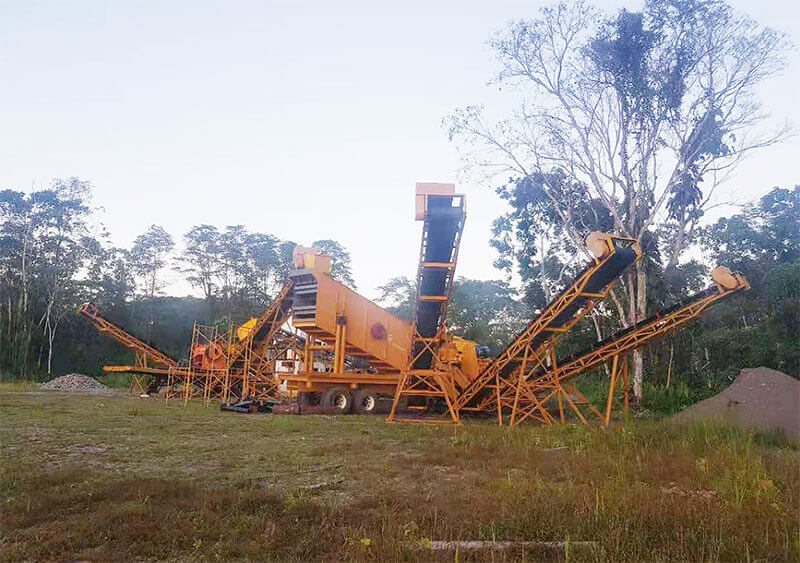
Zeolite Sand-Making Process Plant Equipment
Establishing a zeolite sand-making process plant requires specialized equipment to ensure efficient processing and high-quality output. Here’s a detailed list of essential machinery:
Essential Equipment
- Excavators and Loaders: These machines are vital for mining and transporting raw zeolite to the processing facility. They help move large quantities of material.
- Jaw Crusher: The first step in the crushing process, a jaw crusher breaks down the mined zeolite into smaller, manageable pieces. Its robust design ensures efficient crushing while minimizing particle size variation.
- Hammer Mill: Following the jaw crusher, a hammer mill further reduces the size of the crushed zeolite. This equipment is particularly effective for producing fine particles suitable for sand production.
- Vibrating Screens: Used for screening the crushed material, vibrating screens separate fine particles from larger ones, ensuring that only the desired size is processed further.
- Washing Equipment: High-pressure washers or log washers are essential for cleaning the zeolite and removing impurities. This step ensures the quality of the final product.
- Rotary Dryer: Rotary dryers dry the washed zeolite, reducing moisture content. This equipment operates efficiently to ensure quick drying and maintaining product quality.
- Milling Equipment: Ball mills grind the dried zeolite into fine sand particles. This equipment is essential for achieving the desired particle size distribution.
- Conveyors: Various conveyors transport materials between different process stages. They facilitate the smooth movement of materials and reduce manual handling.
- Dust Collection System: A dust collection system has been implemented to manage dust generated during crushing and milling. This equipment ensures a safe working environment by minimizing airborne particles.
Conclusion
The zeolite sand-making process plant transforms natural zeolite into a valuable resource for various industries. With its wide range of applications—from water treatment to construction—zeolite sand is a versatile and sought-after material. Understanding the processes involved in its production and the equipment required is essential for businesses looking to harness the benefits of zeolite sand.
As demand for sustainable and effective materials continues to grow, the production of zeolite sand is poised to become increasingly important. By leveraging zeolite’s unique properties, industries can improve efficiency, reduce environmental impact, and contribute to a more sustainable future. Whether used in agriculture, construction, or environmental remediation, zeolite sand represents a promising avenue for innovation and growth in various sectors.
Eastman is a professional mining equipment manufacturer with 38 years of rich experience in the mining construction industry. We can also provide lab equipment. Welcome to consult our professional team to get factory prices. According to your situation and product requirements, we will design a complete sand-crushing production line flow chart and provide an accurate quotation.
